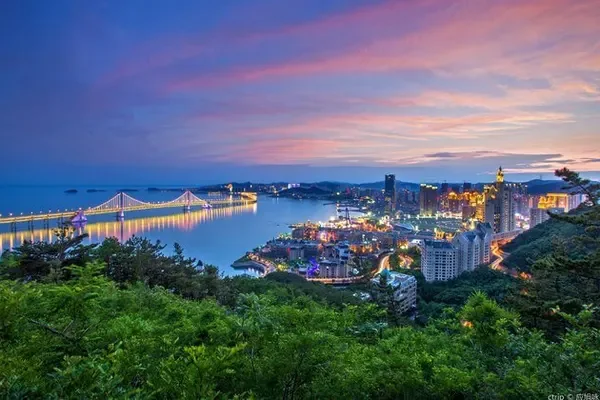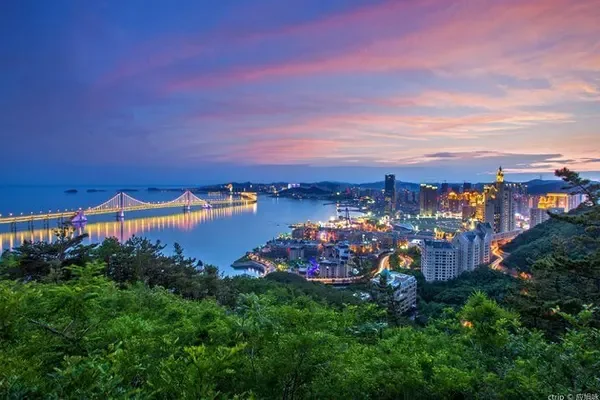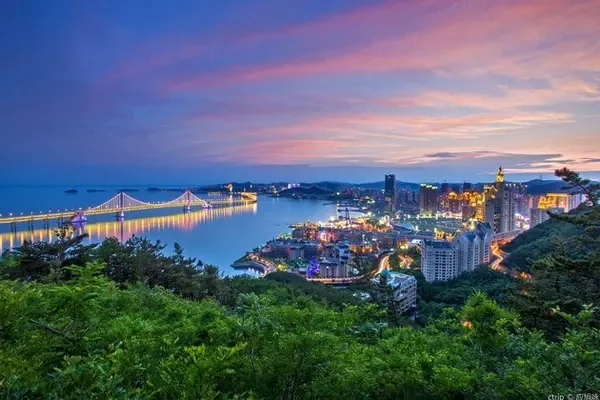
Beijing is the tourist destination I have always longed for. It is the political, economic and cultural center of our country, and I have long wanted to see his style. In the golden autumn of this year, I finally got my wish and arrived at the heart of the motherland—Beijing, and witnessed its splendor. As a Chinese, everyone should go to Beijing to take a walk and have a look.

Zhengyangmen, commonly known as Qianmen, Qianmenlouzi, Daqianmen, formerly known as Lizhengmen, was the south gate of the inner city of Beijing during the Ming and Qing dynasties. It is located at the southernmost end of Tiananmen Square on the north-south central axis of Beijing, south of Chairman Mao Memorial Hall. It was built in the 17th year of Yongle (1419), Emperor Chengzu of the Ming Dynasty, and is one of the "nine gates of the capital" in old Beijing.

The Chairman Mao Memorial Hall is the highest memorial hall in China, a memorial hall for the older generation of proletarian revolutionaries headed by Comrade Mao Zedong, and a national patriotic education base. It is located at the southern end of Tiananmen Square, on the central axis of Beijing, with a total construction area of 28,000 square meters. Here, the body of Chairman Mao Zedong is placed, and there are memorials for the revolutionary achievements of Mao Zedong, Zhou Enlai, Liu Shaoqi, Zhu De, Deng Xiaoping and Chen Yun.

I came to Tiananmen Square with a very solemn and excited mood. Tiananmen Square, majestic and magnificent, is a place that people all over the country yearn for. For myself, there is a deep admiration complex in my heart. I remember when I was a child, the scenes of Tiananmen Square in the movie once made our generation excited. The majestic appearance of Anmen that day made me so excited and filled with thoughts.

Tiananmen Square recorded the indomitable revolutionary spirit and fearless heroism of the Chinese people. The May Fourth Movement, the January 29th Movement, and the May 20th Movement all left a strong color for the history of modern Chinese revolution. It is also the place where countless major political and historical events took place, and it is the historical witness of China's decline and rise.


Tiananmen Square. The venue is spacious and spectacular. Tiananmen Square is located in the center of Beijing, on East Chang'an Avenue, Dongcheng District, Beijing. It starts from Tiananmen in the north, Zhengyangmen in the south, starts from the National Museum of China in the east, and ends in the Great Hall of the People in the west. It is 880 meters long from north to south and 500 meters wide from east to west. With an area of 440,000 square meters, it can accommodate 1 million people to hold grand gatherings. It is the largest city square in the world.

The Monument to the People's Heroes is located in the center of Tiananmen Square in Beijing, on the north-south central axis about 463 meters south of Tiananmen and 440 meters north of Zhengyangmen. Freedom and happiness, built by the people's heroes who died in previous struggles.

The Great Hall of the People is the meeting place of the National People's Congress of China and the office of the Standing Committee of the National People's Congress. It is an important place for the party, the state and various people's organizations to hold political activities, and it is also a place for Chinese party and state leaders and the people to hold political, diplomatic and cultural activities.

In the center of the square is the Monument to the People's Heroes. The eight characters "People's Heroes Are Immortal" reflect thousands of golden rays of light under the sunlight.

The National Museum of China, referred to as the National Museum, is affiliated to the Ministry of Culture of the People's Republic of China. It is located on the east side of Tiananmen Square in the center of Beijing, on the south side of East Chang'an Street, and is symmetrical with the Great Hall of the People from east to west. The predecessor of the National Museum of China is the Chinese History Museum and the Chinese Revolution Museum. It is a famous collection of ancient, modern, contemporary Chinese history and precious cultural relics.


Tiananmen Square National Day flower bed, since 1986, Tiananmen Square has been designing and arranging a large themed flower bed in the center of the square every year around the new characteristics of the country's economic and social development for people to watch. In 1986, the landscape was named "Tian'an Liri" and was rated as one of the "Sixteen Scenic Spots of Beijing". The three-dimensional flower beds with distinctive themes in Tiananmen Square in Beijing attracted many citizens and tourists to take pictures. The picture shows the "Bless the Motherland" flower bed.

Xi Jinping once said: China's yesterday has been written in the annals of human history, China's today is being created in the hands of hundreds of millions of people, and China's tomorrow will be even better. The whole party, the whole army and the people of all ethnic groups in the country must unite more closely, not forgetting the original intention, keeping in mind the mission, continue to consolidate and develop our People's Republic, and continue to strive for the realization of the "two centenary" goals and the realization of the Chinese nation's Work hard for the Chinese dream of great rejuvenation!



Five-star red flag flying high


The majestic Tiananmen Square, the simple Chinese watches, and the majestic stone lions are full of profound Chinese traditional cultural connotations and exude the spirit of Chinese traditional culture.

Huabiao is an important symbol of Tiananmen Square. It is integrated with the majestic Tiananmen Gate Tower, the graceful and elegant Jinshui Bridge, and the mighty and majestic stone lions. It has become a unique beautiful landscape in front of Tiananmen Square. The squatting beast on the top of the Huabiao in front of Tiananmen Square is called "Ji", and when looking outside the palace, people call it "Wang TianJi" and "Wang Jungui". Behind the Tiananmen Gate Tower, there are two similar Chinese watches, with a stone squatting on the top. The stone on the Huabiao faces north, towards the direction of the palace, and people call it "Wang Jun Chu". "Looking out for the king" advised the emperor not to stay in the palace all the time, but to go to the people to see the suffering of the people.



Tiananmen is the main gate of the Beijing imperial city in the Ming and Qing dynasties. It was first built in the 15th year of Yongle in the Ming Dynasty (1417). The designer is Kuai Xiang, an imperial architect of the Ming Dynasty. In the eighth year of Shunzhi in the Qing Dynasty (1651), it was renamed Tiananmen Square. It is composed of two parts: the city platform and the city tower. There is a Xumizuo made of white marble, with a total height of 34.7 meters. The Tiananmen Gate Tower is 66 meters long and 37 meters wide. There are five coupon gates under the city platform. The coupon gate in the middle is the largest and is located on the central axis of the Beijing Imperial City. In the past, only the emperor could enter and exit through it. A portrait of Mao Zedong hangs above the central doorway, and on both sides are large slogans of "Long live the People's Republic of China" and "Long live the great unity of the people of the world".

The majestic Tiananmen Square, the simple Chinese watches, and the majestic stone lions are full of profound Chinese traditional cultural connotations and exude the spirit of Chinese traditional culture.

A pair of huge stone lions are placed in the north and south of the Jinshui Bridge in front of Tiananmen Square. These four white jade lions are exquisitely carved. According to the book "Chinese Lion Art": "These two pairs of stone lions were carved in the fifteenth year of Yongle in the Ming Dynasty (1417). They are 2.5 meters high, and the total height of the base is nearly 3 meters. The highest level of stone lions." The proportions of these two pairs of stone lions are well-proportioned, with wide eyes, slightly tilted heads, half-grinning mouths, neatly coiled mane hairs, and a small "circle" on the front legs. "Qian" pattern, wearing a tasseled brocade belt, with ring bells and tasseled tassel pendants on the chest ribbon. The material used for stone lions is a grayish-white stone with uniform light gray-green spots, which is highly resistant to natural weathering. The stone lions are chiseled from a whole block of stone, with the same shape, size and carving workmanship, which embodies the carving technology of the Ming Dynasty and is a representative of northern stone lions.




Moving on, you will find the Forbidden City, which is also crowded with people.







I love the great rivers and mountains of the motherland, and I love Tiananmen Square even more! I am proud, I am Chinese!


